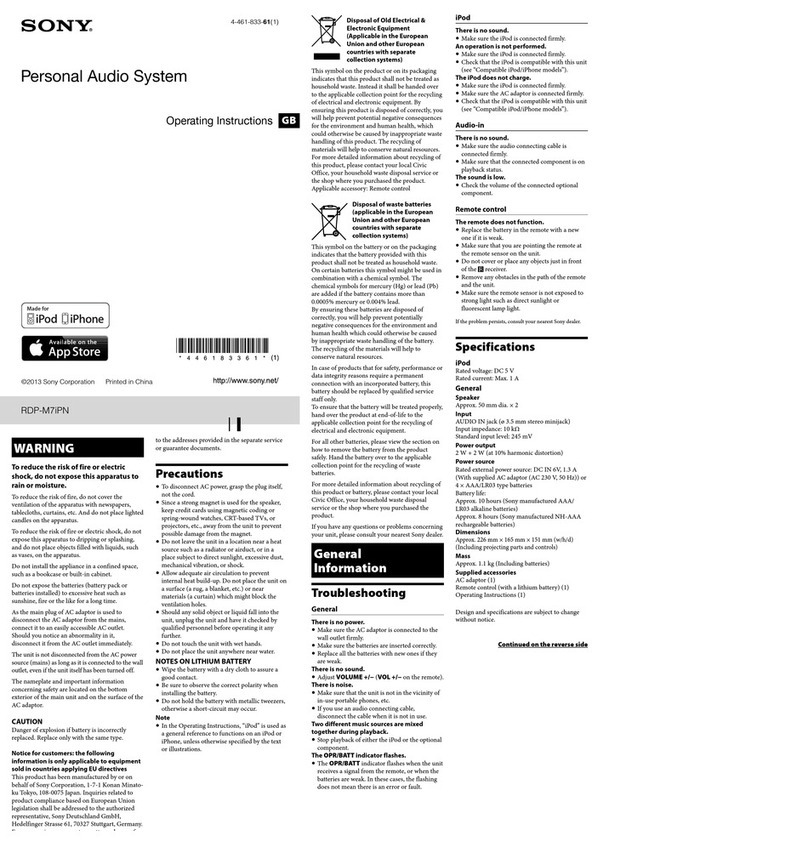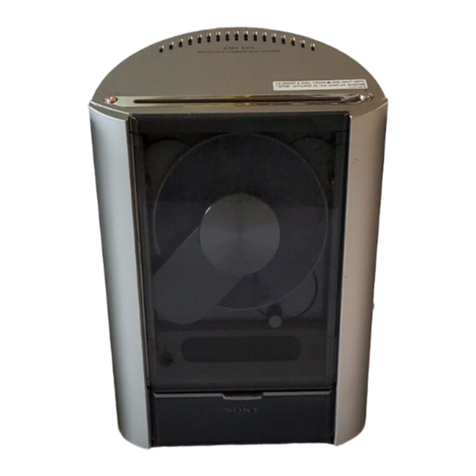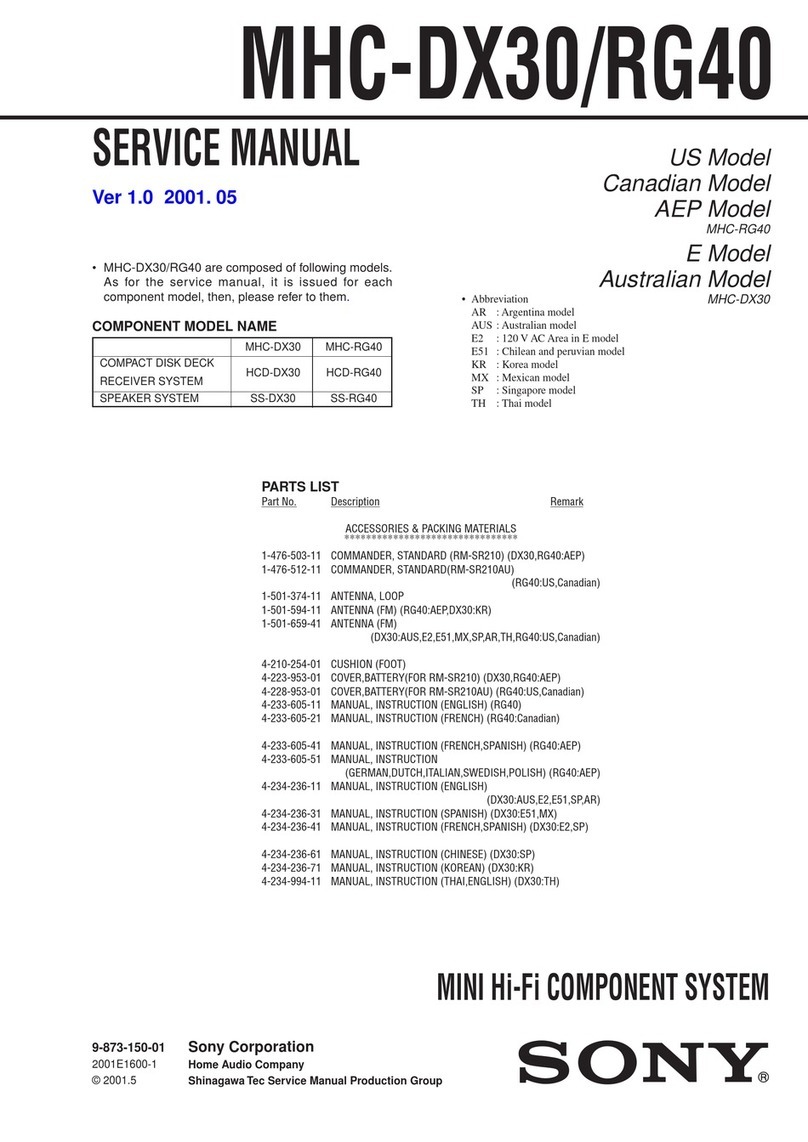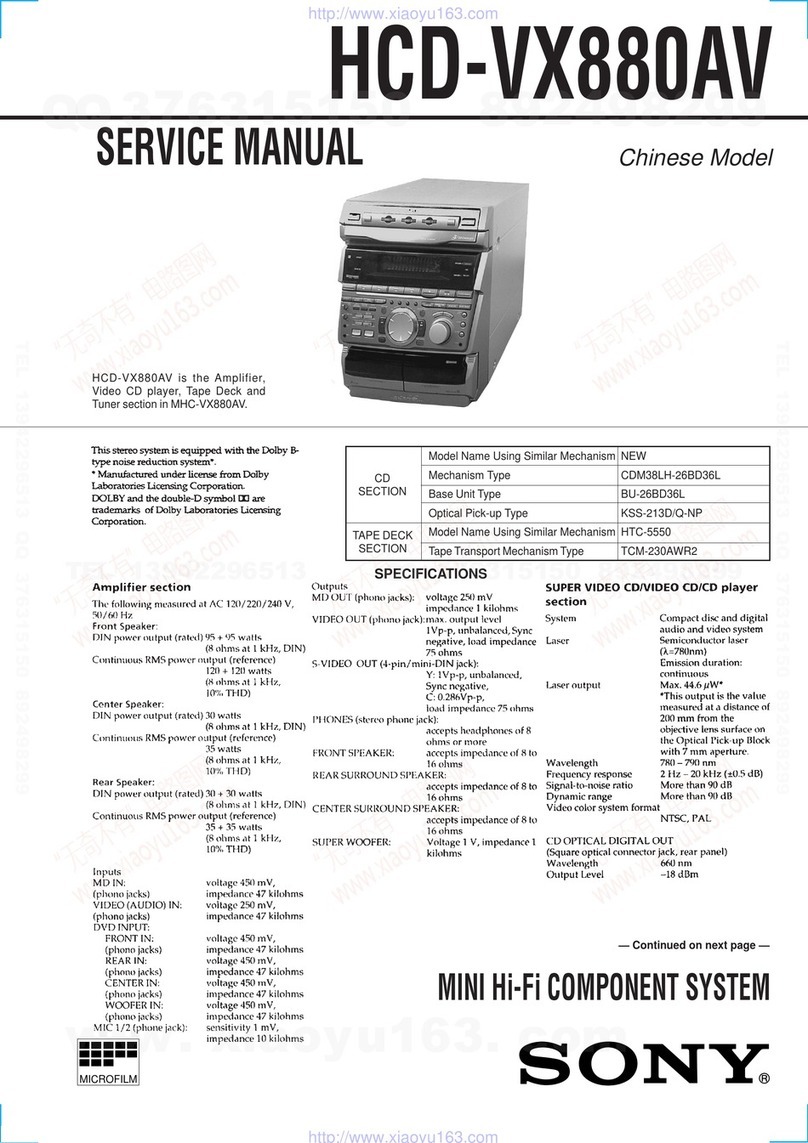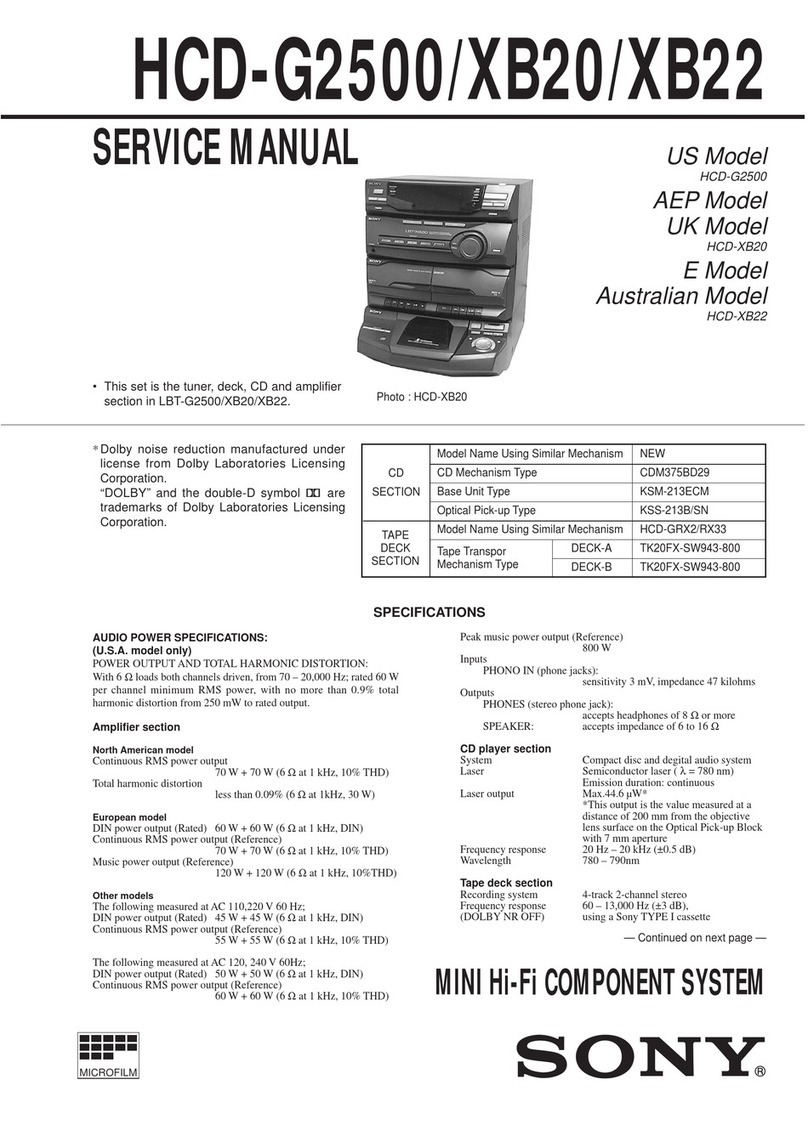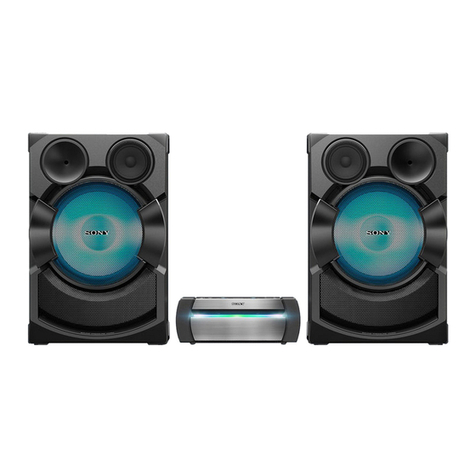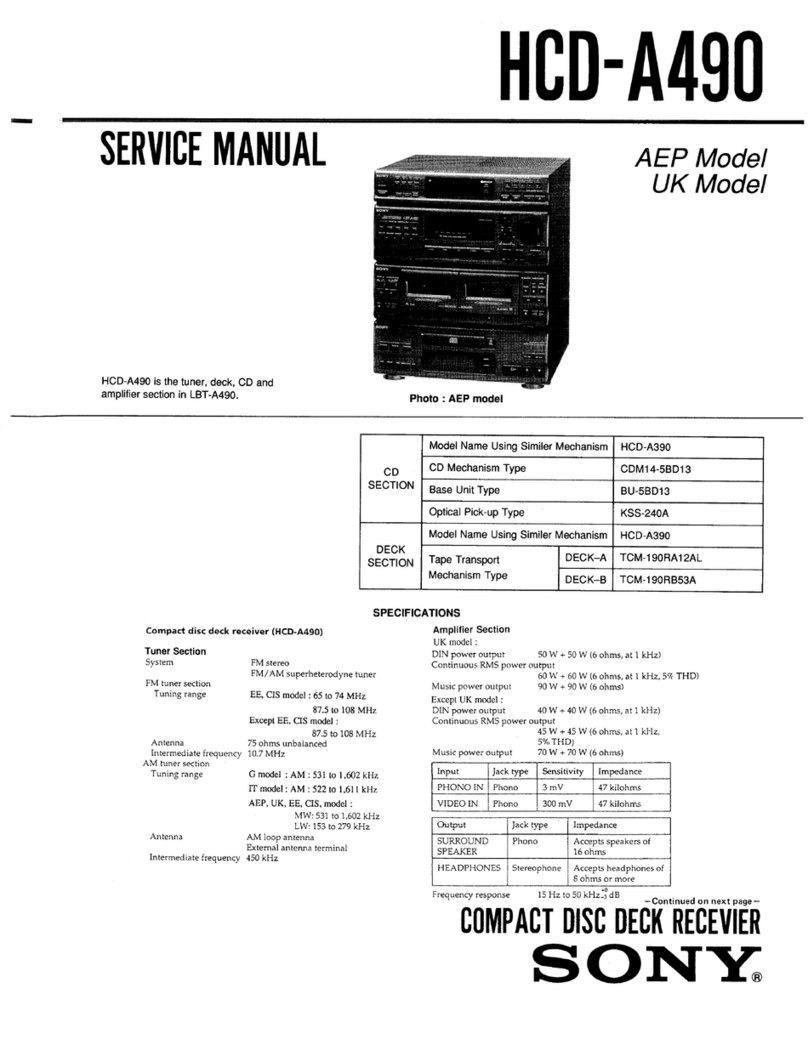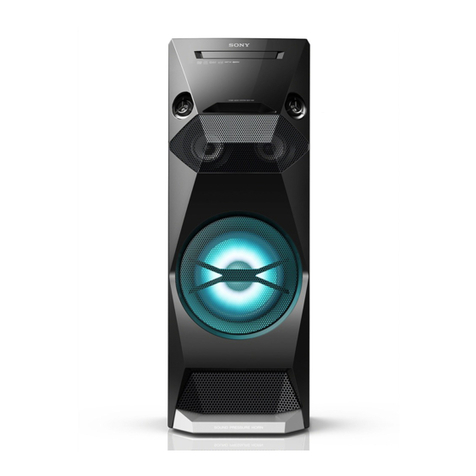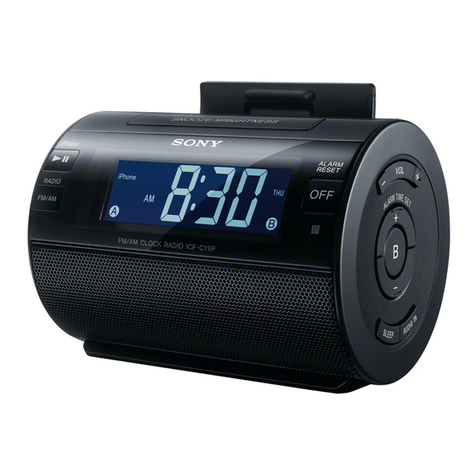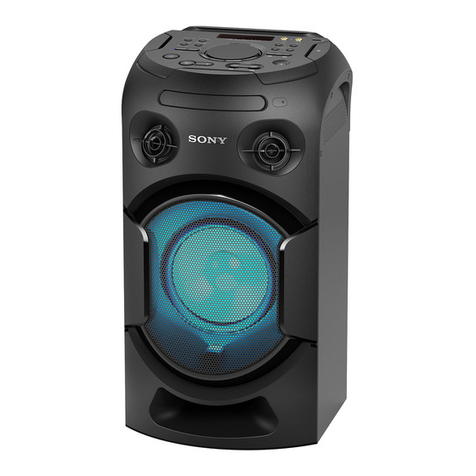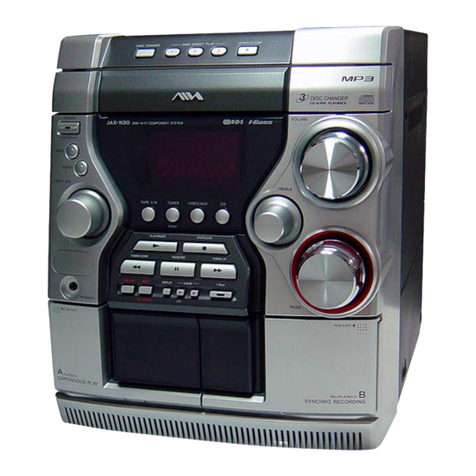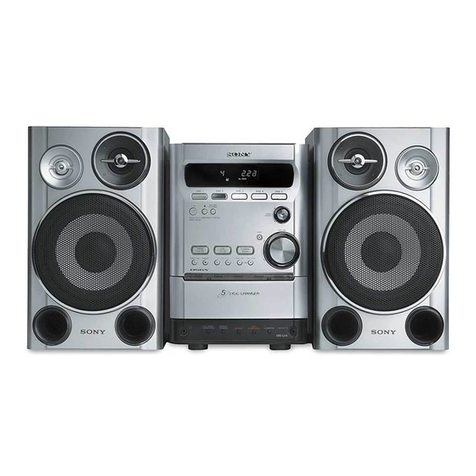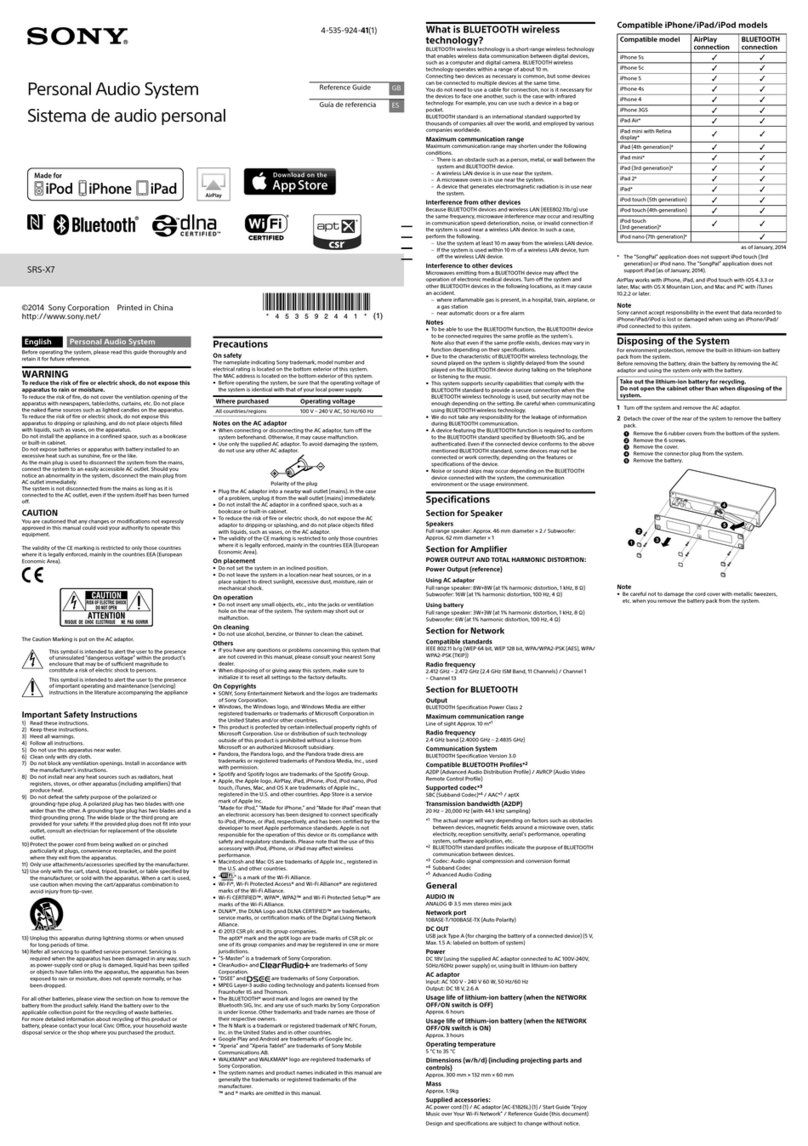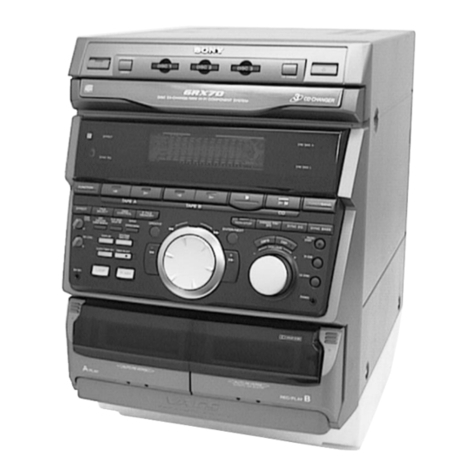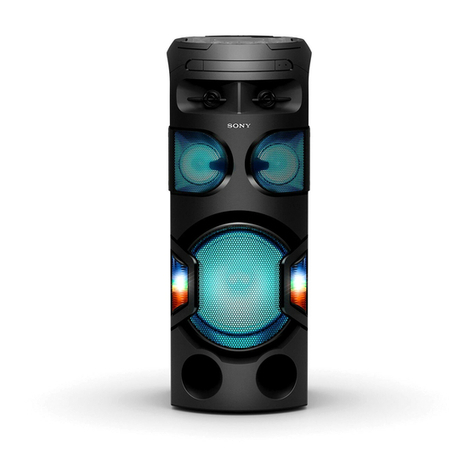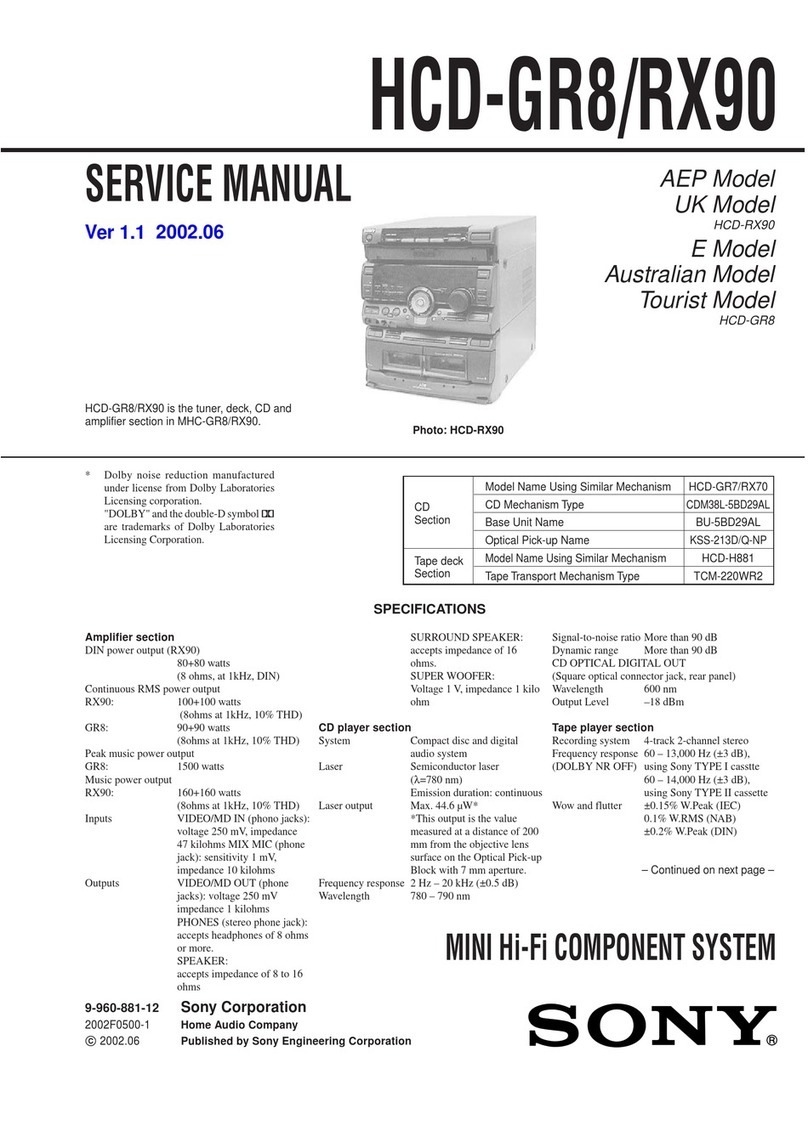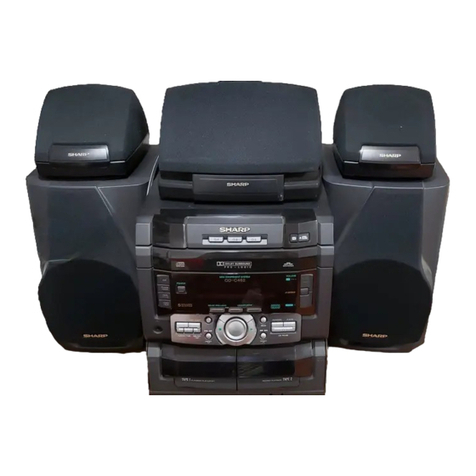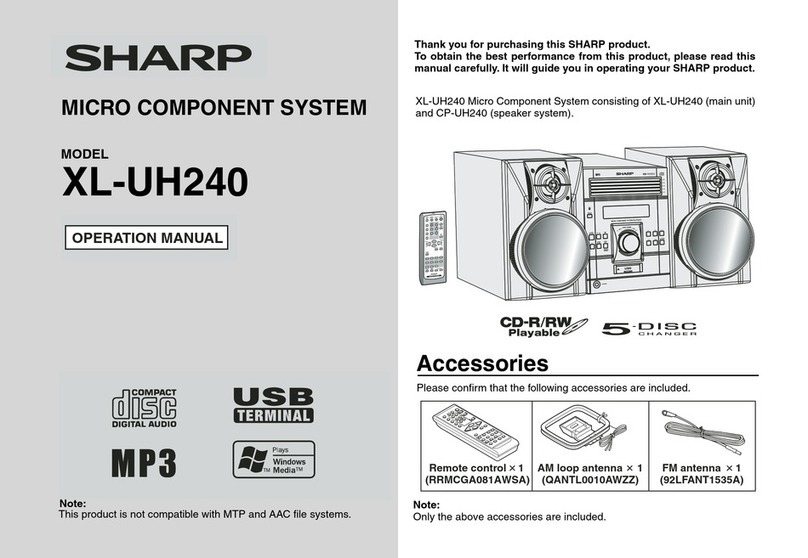
2
HCD-GX355/GX555/RG270/RG475/RG575
Other models:
HCD-RG575
The following measured at AC 120, 127, 220, 240 V
50/60 Hz
Front speaker
DIN power output (rated): 100 + 100 watts (6 ohms at
1kHz, DIN)
Continuous RMS power output (reference):
125 + 125 watts (6 ohms at
1kHz, 10% THD)
Sub woofer
DIN power output (rated): 120 watts (6 ohms at
80 Hz, DIN)
Continuous RMS power output (reference):
150 watts (6 ohms at
80 Hz, 10% THD)
HCD-RG475
Front speaker
The following measured at AC 120, 127, 220, 240 V
50/60 Hz
DIN power output (rated): 100 + 100 watts (6 ohms at
1kHz, DIN)
Continuous RMS power output (reference):
120 + 120 watts (6 ohms at
1kHz, 10% THD)
Sub woofer
DIN power output (rated): 120 watts (6 ohms at
80 Hz, DIN)
Continuous RMS power output (reference):
150 watts (6 ohms at
80 Hz, 10% THD)
HCD-RG270
The following measured at AC 120, 127, 220, 240 V
50/60 Hz
DIN power output (rated): 100 + 100 watts (6 ohms at
1kHz, DIN)
Continuous RMS power output (reference):
125 + 125 watts (6 ohms at
1kHz, 10% THD)
Inputs
AUDIO IN (stereo mini jack):
voltage 250 mV,
impedance 47 kilohms
MIC (phone jack) (Latin American model only):
sensitivity 1 mV,
impedance 10 kilohms
Outputs
PHONES (stereo mini jack):
accepts headphones of
8ohmsormore
VIDEO OUT (phono jack) (Mexican model only):
max. output level 1Vp-p,
unbalanced, Sync
negative, load impedance
75 ohms
SPEAKER: accepts impedance of 6 to
16 ohms
SUBWOOFER OUT (HCD-GX555/RG575/
RG475 only): accepts impedance of 6 to
16 ohms
CD player section
System Compact disc and digital
audio system
Laser Diode Properties Emission duration:
continuous
Laser Output*:
Less than 44.6µW
*Thisoutput is the value measurement at a distance of
200mm from the objective lens surface on the
Optical Pick-up Block with 7mm aperture.
Frequency response 2 Hz – 20 kHz (±0.5 dB)
Signal-to-noise ratio More than 90 dB
Dynamic range More than 90 dB
Tape deck section
Recording system 4-track 2-channel, stereo
Frequency response 50 – 13,000 Hz (±3 dB),
using Sony TYPE I
cassettes
Tuner section
FM stereo, FM/AM superheterodyne tuner
FM tuner section
Tuning range
North American model: 87.5 – 108.0 MHz
(100 kHz step)
Other models: 87.5 – 108.0 MHz
(50 kHz step)
Antenna FM lead antenna
Antenna terminals 75 ohms unbalanced
Intermediate frequency 10.7 MHz
AM tuner section
Tuning range
Pan-American models: 530 – 1,710 kHz
(with the tuning interval
set at 10 kHz)
531 – 1,710 kHz
(with the tuning interval
set at 9 kHz)
European, Russian and Saudi Arabian models:
531 – 1,602 kHz (with the
tuning interval set at
9kHz)
Other models: 530 – 1,710 kHz
(with the tuning interval
set at 10 kHz)
531 – 1,602 kHz
(with the tuning interval
set at 9 kHz)
Antenna AM loop antenna
Intermediate frequency 450 kHz
General
Power requirements
North American model: 120 V AC, 60 Hz
European and Russian models:
230 V AC, 50/60 Hz
Australian model: 230 – 240 V AC, 50/60 Hz
Argentine model: 220 V AC, 50/60 Hz
Mexican model: 127 V AC, 60 Hz
Saudi Arabian model: 120 – 127, 220 or
230 – 240 V AC, 50/60 Hz
Adjustable with voltage
selector
Other models: 120 V, 220 V or
230 – 240 V AC, 50/60 Hz
Adjustable with voltage
selector
Power consumption
USA model:
HCD-GX555: 285 watts
HCD-GX355: 210 watts
Canadian model:
HCD-GX555: 380 VA
HCD-GX355: 290 VA
European and Russian models:
HCD-RG475: 300 watts
0.25 watts (at the Power
Saving Mode)
HCD-RG270: 190 watts
0.25 watts (at the Power
Saving Mode)
Other models:
HCD-RG575: 300 watts
HCD-RG475: 300 watts
HCD-RG270: 210 watts
Dimensions (w/h/d) (excl. speakers)
Approx. 280 ×325
430 mm
Mass (excl. speakers)
North American models:
HCD-GX555: Approx. 10.5 kg
HCD-GX355: Approx. 10.0 kg
Canadian model:
HCD-GX555: Approx. 10.5 kg
HCD-GX355: Approx. 10.0 kg
European and Russian models:
HCD-RG475: Approx. 10.5 kg
HCD-RG270: Approx. 8.7 kg
Other models:
HCD-RG575: Approx. 10.5 kg
HCD-RG475: Approx. 10.5 kg
HCD-RG270: Approx. 10.0 kg
Design and specifications are subject to change
without notice.
HCD-RG270
DIN power output (rated): 80 + 80 watts (6 ohms at
1kHz, DIN)
Continuous RMS power output (reference):
100 + 100 watts (6 ohms at
1kHz, 10% THD)
Music power output (reference):
200 + 200 watts (6 ohms at
1kHz, 10% THD)
